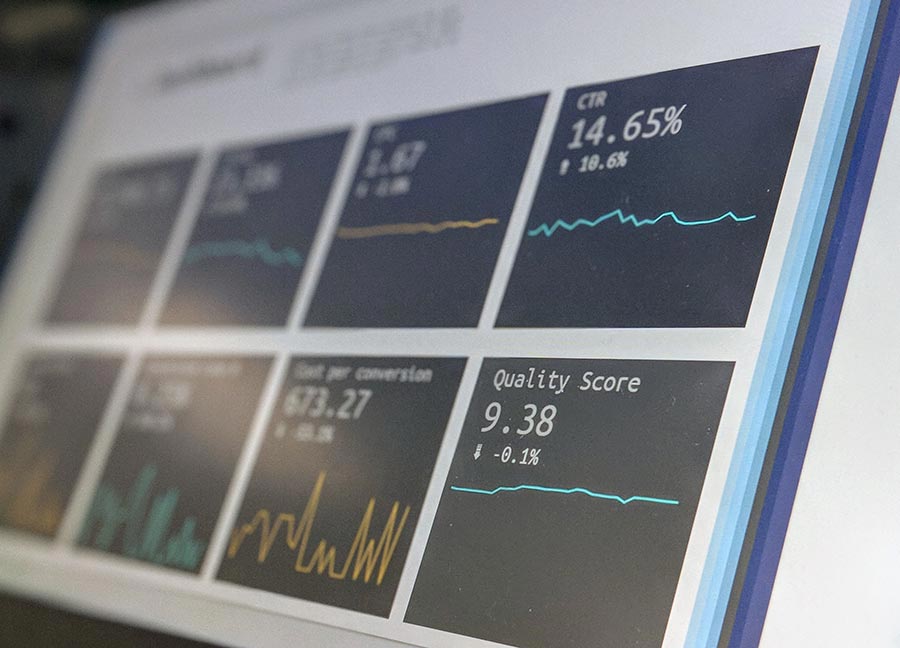An airplane that has no destination, will most probably land in the ocean. This is true for your personal life, your marketing efforts, and your website traffic.
You have to build a ‘funnel’ for the people that have landed on your website. And that funnel needs to lead them to a specific place on your website.
Depending on your business model, that place could be ‘yet another content’, like YouTube, and personal blogs, or it could be the shopping cart when speaking of an e-commerce shop.
Read: How to Create an E-commerce Website Using WordPress
The place you are striving to lead your users to is, naturally, the goal you are trying to achieve.

What is a Goal in Google Analytics
After you’ve chosen a web hosting service and built your website, what is left before you can dive into the data presented by the tool is to Install Google Analytics, and get traffic to your website.
After these tasks are achieved, you wait. For the data to be accumulated.
But what should you do with that data?
Honestly, if you never, ever had the opportunity to enter the Google Analytics Dashboard, most likely you will be astonished by the volume of data that it has. Furthermore, you’ll be confused about what is what.
Once you find out where the information that you need is located, you’ll need to devote your time to analyzing it. And even by doing so, you’ll get more or less average numbers.
On average users stay so much time on your website.
That information is too vague for you to reach conclusions. Where are you in terms of goal-achieving? And what your goals should be in the first place.
And thus, Google Analytics is allowing you to add specific goals. They are to track the user’s interaction with your website. And what you’ll track depends on what your business needs. But it could be anything from button clicks to time spent on the website(set up a specific time period that you want your users to be on the site, and you’ll get the exact number of people that did that), file downloads, submissions and a lot more.
What Four Types of Goals are Available in Google Analytics
As visible from the sub-title Google Analytics has four types of goals that you can set.
- Destination
- Duration
- Pages/Screens per session
- Event
They are pretty straightforward.

The destination is for the user/s to reach a specific page that will show you that they’ve done something you want them to do. Perhaps you have a ‘thank you’ page, shown after a purchase is made. Or you really want people to read an article that you found is crucial for their conversion from a wandering internet user to a long-life reader of your blog.
When speaking of Duration it is obvious what is meant. The time that a single user is spending engaging with your content. Bear in mind that duration goals do not track how much time a person spends reading an article. It is an overall session duration. In other words, how much time he or she was on the website.
Pages/Screens per session is a goal that will help you understand how many people have seen the number of pages that you want them to. Meaning that if for some reason, you find it important that your users are visiting 3 or more pages every time they land on your website, you’ll be able to track the exact number that did.
Last but not least is the Event type of goal. Setting that goal the right way can and will track how many people clicked on a button, submitted to a newsletter, downloaded a file, played a video, etc.
Three Goals to set in Google Analytics
I get that every business is different and thus some of the goals that I’ll list may not be applicable to you. Yet, online ventures are more or less similar. And all of us are striving for these goals to be reached.
1. Page views
It is extremely important for you to know how many pages is the average user visiting, when on your website. But it is just as well important to know how many of the users did visit the number of pages that you want them to.
It demonstrates engagement. Interest in what you have to offer. Being its content (of any type), products, or services.
If people are engaged with your website but there are no sales (are they are way too low), you may consider improving your buying funnel. Test your website with someone that you know. Try to abstain from helping them to orientate.
This will help you, root out the problem that you might have. On the other hand, if you have a low volume of page views, you may consider changing the navigation menu. You can see how many applications this information has.
2. Account Creations
The number of created accounts will also tell you a vast number of things. Maybe people want to buy from you, but don’t trust you enough with their data.
If you have a shop, you have to already have it but if not, consider adding an SSL certificate.
In case you already took care of that, but Account creations are still less than you expected or strive for, check if doing that action is not requiring too much information or effort. The easier it is for people to register, the more they’ll do it.

3. Order Confirmation
This is a destination type of Google Analytics goal. Definitely, add a thank you page, and set this goal.
Especially if you have a lot of digital products at different price ranges. That way it would be impossible for you to evaluate how much of which you sold. Except, of course, if you don’t track it with Analytics.
Conclusion
Marketing is analysis. Without goals, you’ll analyze information without substance. Information that won’t be able to tell you anything. Useless information.
Yet, when goals are set, all of the information could be added to those goals. And now a whole new image is emerging.
How many people are doing what you want them to? Out of how many?
If your website has millions of users, but only thousands are reaching your goals, there is probably something wrong.
Set your goals. Analyze the gathered data. Improve people’s experience. Reach your goals. You have to give, in order to get.
